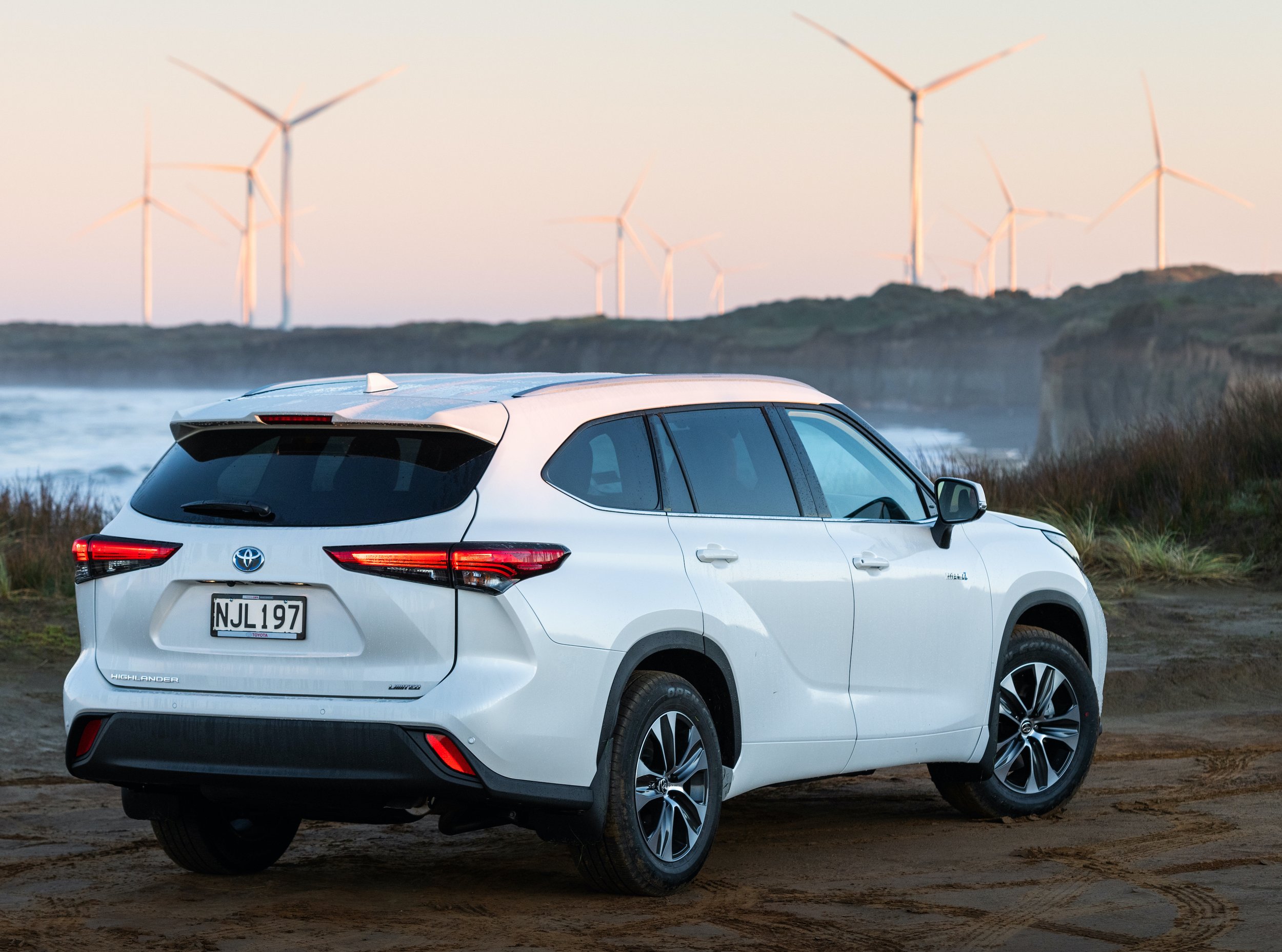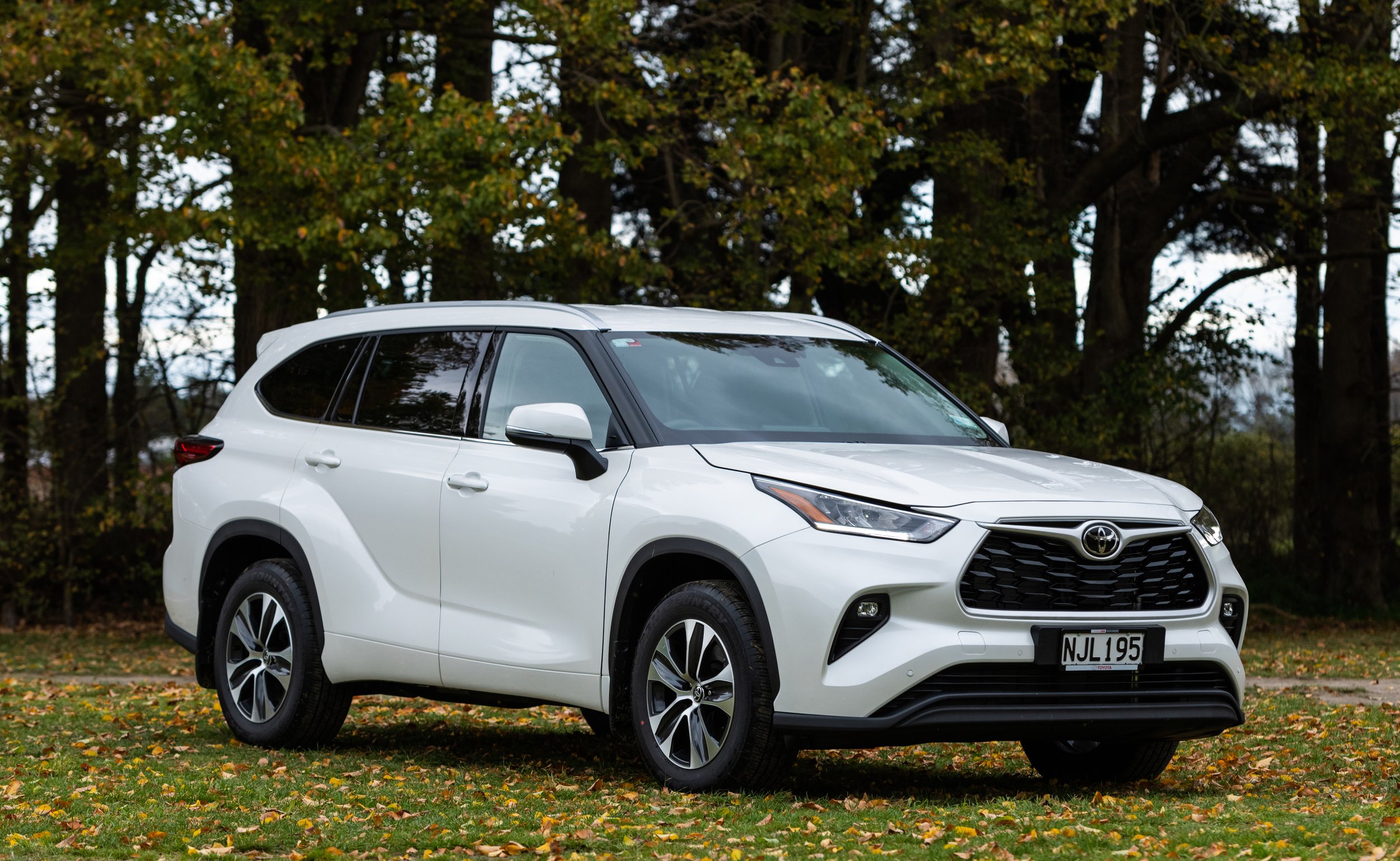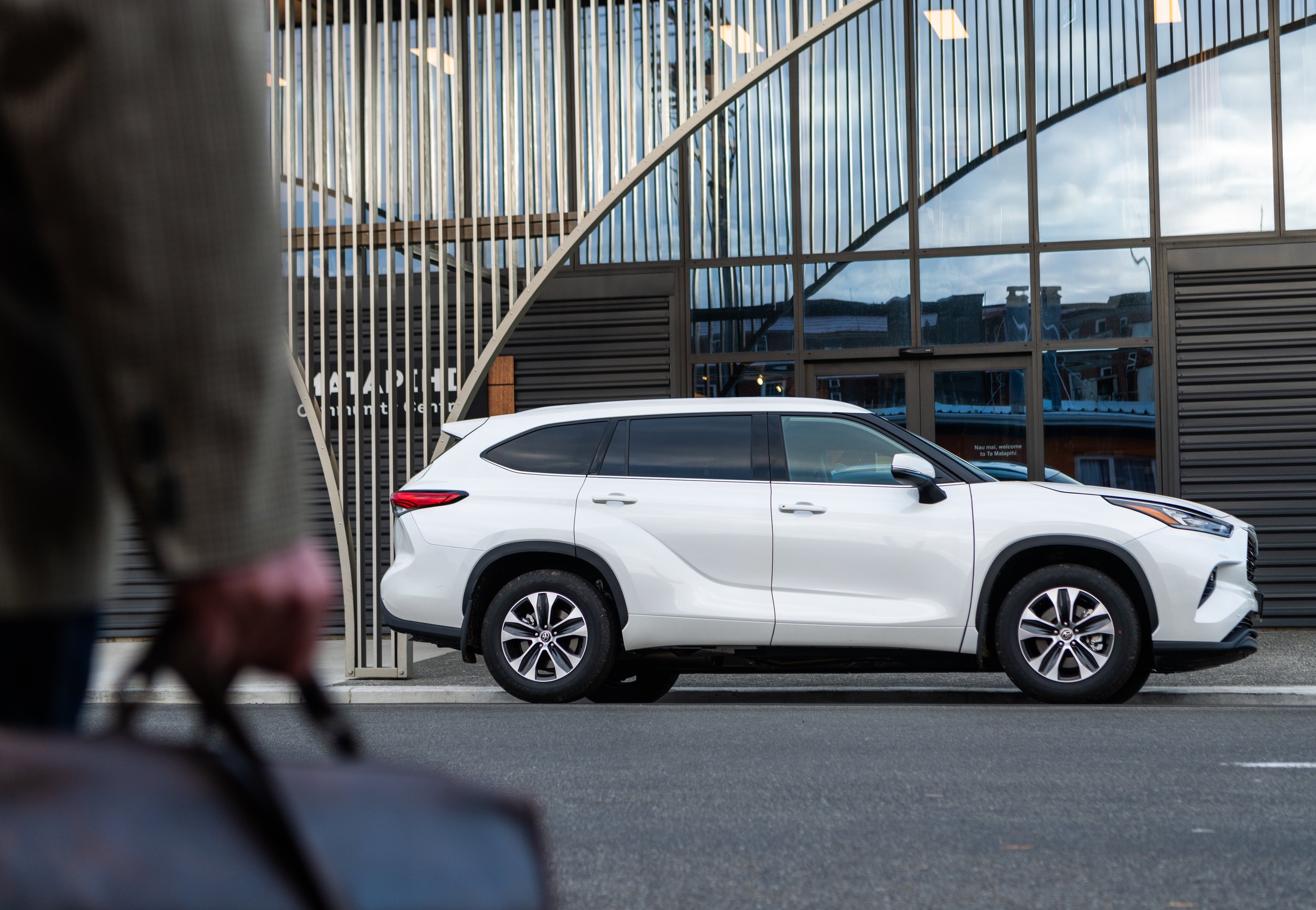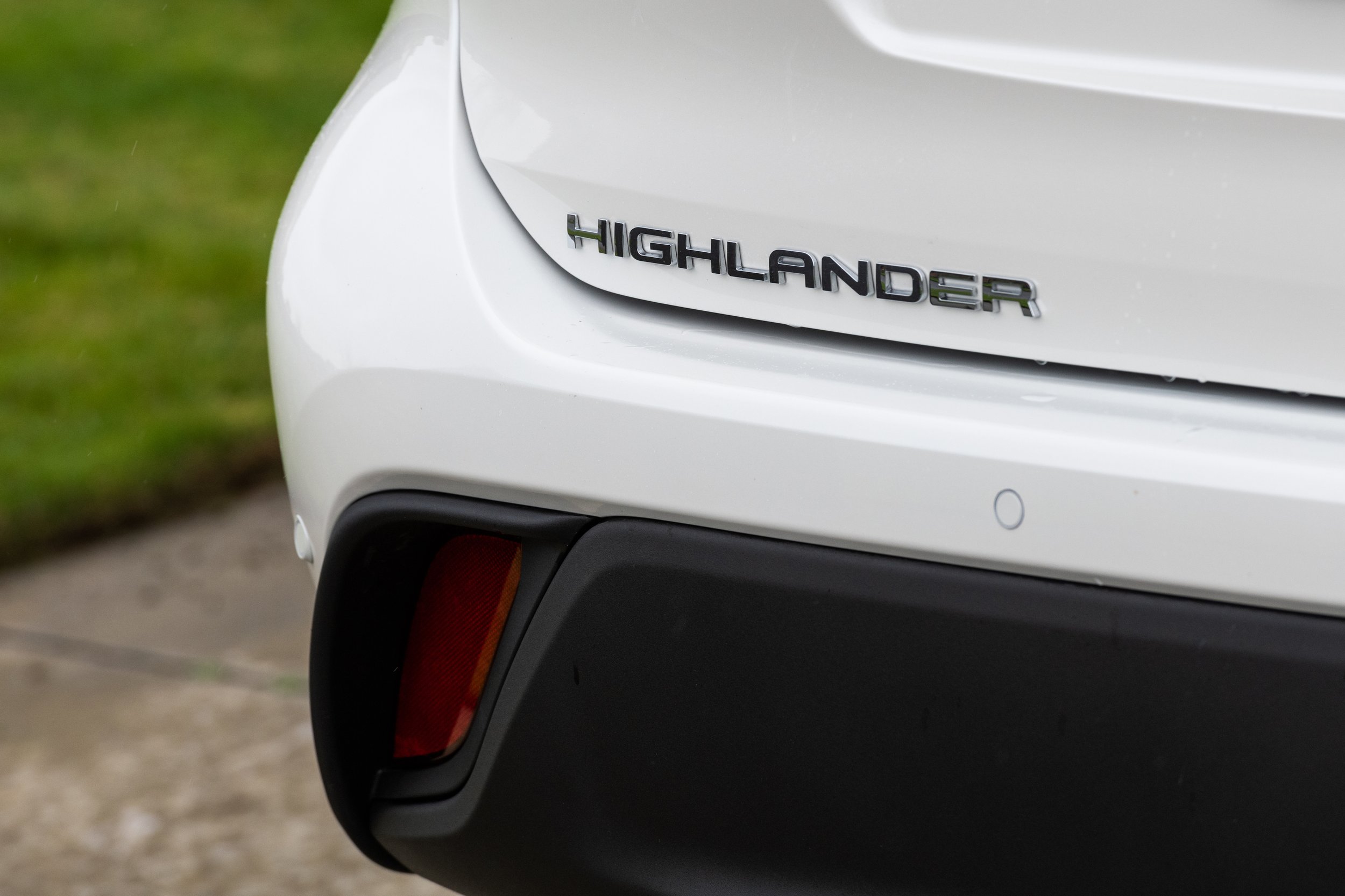Toyota Highlander ZR Limited review: Less heat, less burn than a V6
/If you want a practical, big and comfy seven-seater but don’t want a diesel, this hybrid is a solid choice.
Price: $75,990
Powertrain: 2.5-litre petrol four cylinder with electric motors, 184kW (combined), 242Nm; front electric motor 134kW/270Nm, rear electric motor 40kW/121Nm; CVT; 5.6 litres per 100km (claimed), all-wheel-drive.
Vital statistics: 4966mm long, 1930mm wide, 1755mm high, 2850mm wheelbase, luggage capacity 241-1150 litres; 20-inch alloy wheels.
Like: No V6 slurping, roomy cabin, comfortable ride.
Don’t like: Dated infotainment displays, performance adequate rather than electrifying.
“IT remains the pioneer into electrification – and has been clearly, for Toyota, an icon. It started our journey back more than 25 years ago.
“It has to keep a role, and we have to make sure it will always be a front-runner with that kind of technology, so – although I can't disclose much – we don't want to waste our icon, even for the future.”
So, there you go. Regardless that the world’s first big hit hybrid, Prius, has become – in this country included – the lowest volume achiever of the many petrol-electrics Japan’s largest car maker now offers, according to brand high-up Andrea Carlucci, Toyota Europe’s head of marketing and product, it is still too important to put out to pasture. Another generation is coming.
Exactly what new form a nameplate that dates back to 1997 will next take is still open to conjecture; the sedan styling that it kicked off lasted but one cycle and it has been a hatchback ever since. Logically, given the massive popularity of sports utilities and crossovers, Toyota would be wise to consider shaping the next Prius in a vaguely dirt-ready format, as an alternate to the RAV4 Hybrid.
We might not have long to wait. The Prius has been on sale in its current form since 2016 and, based on the six-year lifecycles of the previous iterations, is up for renewal this year.
Toyota’s confidence about Prius having an ongoing role also reinforces another oft-uttered brand statement. Japan Inc’s biggest player now seems as fully committed as any other major brand to making wholly battery-committed cars. That’s a fact. At same token, the concept of a petrol-fed and electric-assisted (but non-mains replenished) set-up might seem laughably out of vogue among those who hang out around EV charging stations. Yet Toyota is unremitting. It says it will also nonetheless keep the faith with the tech in which it already has world leadership. Tech whose performance and efficiency it has progressively finessed in belief it will be no less important in tomorrow’s world as it is now.
Good idea? Waste of time? Who knows. But at least that strategy might stand as a reassurance for those now drawn to Highlander as result of it having also joined the hybrid clan. They know it’s in for the long haul.
The powertrain it picks up is familiar already to drivers of the RAV4 and Camry hybrids, though in this utilisation the 2.5-litre four-cylinder petrol joined by front and rear electric motors – their placement being what makes it four-wheel-drive - fed by a 6.5 amp-hour nickel-metal hydride battery is pepped up because the Highlander is a larger, heavier vehicle. Whether it can truly handle the additional size and weight is probably going to be foremost in anyone’s mind.
Primarily, though, they also wonder if it’s enough to meet all Green expectations. As a closed loop type – meaning there’s no external charging capability, with the battery instead replenishing through driving, coasting and braking – it’s not as smarty-pants as the plug-in hybrid systems other brands are now implementing into similar vehicles that are akin in look and ability to the ZR Limited flagship on test here.
A particular candidate for cross-shopping at present could be the Kia Sorento PHEV, which has the bonus facility of ability to operate on pure electric impetus, for markedly significant periods of time without need to burn fuel.
However, I’d say presumption they’re altogether equal is mis-placed, and not just because the Kia holds a $15k premium.
With a mild hybrid, the aim is to keep both elements always involved. Kia’s PHEV, on the other hand, goes to extremes – ultimately, it can run purely on electric and so operate without emitting CO2, but also, when that exhausts – as it will after just 55kms’ running at most (and potentially more like 35-40kms in real life), it will rely on the engine alone to keep it rolling. Which, BTW, is a 1.6-litre.
Thought about that being quite small for a vehicle of this substance is borne out in driving; it really has to exert a lot at times and, hardly coincidentally, that blows the economy goodness to pieces. A car that, with battery involved, shows as a sub-2 litres per 100km sipper transforms into almost 10L/100km fuel swigger. The Highlander, meantime, settles about halfway between those swings; Toyota claims 5.6L/100km optimal, over 500kms’ running, my average came to 6.5L/100km.
Which might deliver better cost per kilometre result in the long run will depend on user trait and journey type – if the Sorento runs short distances, and prioritises the battery – it would have to deliver advantage. But if it goes long, and asks the engine to pick up the strain? That’s the less clear-cut scenario. It’s a big ask of a 1.6-litre. Anyway, what it comes down to is that they’re not as alike as might first seem.
That’s very much obviously the case, too, when considering the new hybrid against the V6 that has been the sole choice in Highlander for so long and continues as an option still.
There is no argument from me that the current 3.5-litre with its eight-speed automatic offers more sizzle with greater smoothness than the CVT-wed four-cylinder hybrid; the on-paper difference in absolute power and torque outputs is not illusionary.
However, neither is the huge climb in fuel consumption. The six’s hunger for hydrocarbons has simply not been contained with the latest generation. That didn’t matter as much, perhaps, in the old days when most Highlanders spent their days in corporate fleets being fed by company fuel accounts and as rental hacks, mainly driven by well-heeled overseas’ tourists.
But now Toyota has turned its attention away from that sector and is instead intensifying effort to sell the Highlander to private users with families. This is the very buyer type that will conceivably make best logical use of the car as a whole, but it only makes sense if running costs remain sensible. The last thing they want is a car demanding regular deep-dive raids into the home piggy bank. The hybrid is the model that steers clear of that scenario.
In doing such a great job of keeping costs in check, does it polish too much of the edge off in other respects? Well, yes, but nowhere near as much as you might fear.
Sure, it’s not anything as sizzling as the six. And with a CVT giving gear-less operability, it’s less involving: This is a ‘set-and-forget, drive sensibly’ kind of car. Still, no-one buys a Highlander with expectation of it being a raging street machine, so the fuss-free nature of how it operates is probably a bonus.
Taking a deep breath and driving with measured involvements is taking this car into its happiest place. Operation around town is especially smooth and the hybrid system juggles between electric and petrol power so well you’ll need to be watching the specific displays to see when it switches from one or other, or settles on using both. Generally, you just cannot sense those transfers.
Standing starts are not quick, and big ascents can have it sounding out loud, but once it gets rolling on untaxing terrain the hybrid seems relatively unfazed. If anything, when cruising, it is as impressive in its freedom from vibration and smooth power delivery in this installation as it is in the RAV4 and while it hasn’t as much mid-range oomph as the six-cylinder, certainly doesn’t shirk when moved across into the overtaking lane.
The dynamic side of things is restrained. The chassis set-up and spring ratings for the V6 and hybrid is common and the latter is but 30kg heavier. Impression from driving both at the model’s national launch was that the pure petrol felt firmer and sportier, the hybrid more compliant yet also better-balanced. That thought was unaltered after having a longer period with the car.
It feels solid, has good balance and seems sure-footed, but it’s no sports car. The damping is a touch floaty and overall it continues to be a cushy driving champion, tailored thus on assumption most shoppers probably aren't looking for handling performance.
The more folks aboard, the more you’ll have to consider your driving, particularly cornering and I cannot imagine passengers being impressed by anyone striving to drive it like one.
About that. One admission that needs to be made here. I never achieved my intention to fill every seat to judge just what difference that would make to how it goes. I did have three other adults aboard at one point and felt it did take a bit of the edge off, though it wasn’t too bad.
That’s a hopeful sign, given that people-carrying is clearly a role the latest Highlander takes more seriously.
The largest sports utility Toyota furnishes here that has car-based underpinnings and is not specifically tailored for off-roading (at least, not in the manner the Land Cruiser series is) is also the sole one availed to Kiwis that can claim US residency. It’s become so hugely popular in the US, with millions sold over the past two decades, that Toyota now only builds it there. That doesn’t inhibit exporting but our country, Australia and England appear to be the most relevant right-hand markets for the latest which, by dint of it shifting to the TNGA-K platform, seems deemed too big for Japan.
That doesn’t make it an outsider model; as much as everything is scaled up to suit American tastes – and, erm, bottoms – the design attributes remain true to the Toyota global ethos; so even at highest-spec level, there’s not too much chrome and, while there are plenty of cupholders, they’re shaped for general issue containers rather than US-specific supersized ones. But no oily plastics or overly-flat seats.
However, there is plenty of space. The Highlander has never been compromised but the newest must be one of the roomiest car-based SUVs on the market. Front passengers have loads of room and there’s an enormous cubby between the seats, but the centre row is really decent too, particularly for legroom, though headroom is still good even with the standard panoramic sunroof.
There’s a flat floor so three people isn’t a squeeze, either. Even though its primarily for kids, even the back row can cater to adult occupants, at least for short journeys. The boot itself is just big enough for a full swag of grocery bags and becomes a lot larger with the third row folded. A downside is the lack of any handy electric folding mechanism for the seats.
Highlander’s general body shape isn’t an outright street-stopper, but it’s handsome enough with everything in correct dimension. The cabin is ultimately more about function than beauty –not really a bad thing given the duties it will perform – and is built to typical impeccable Toyota standard. The Limited ZR achieves plush leather and soft-touch trim to draw your attention from any utilitarian plastics.
Ease-of-use has clearly been a cabin design dictate; it’s not a model in which all key functions are buried into the touchscreen. In respect to that, the infotainment and the sat nav display looks and feels a bit old-school. But at least it now has Apple CarPlay, albeit as a wired integration.
Highlander’s entry provision is impressive, with LED lights, rain-sensing wipers, an 8-inch infotainment touchscreen display, voice recognition, rear privacy glass, a reversing camera, blind spot monitoring and Toyota’s Safety Sense system that brings – deep breath - a pre-collision system with autonomous emergency braking, emergency steer assist, lane departure warning, lane centring, automatic high beams, road sign recognition, vehicle, pedestrian and cyclist detection, intersection turn assist and active cruise control with automatic curve speed reduction.
The Limited trim divests cloth for synthetic leather and, more importantly, furnishes a power tailgate, heated and power-adjustable front seats, three zone climate control, a seven-inch multi-information display, satellite navigation and silver roof rails; probably quite enough to satisfy if the kids are prone to treat the cabin as an extension of their playroom.
Yet, aside from sitting prettiest of all by divesting the lesser variants’ 18-inch rims for 20-inchers, the ZR Limited compels by being the only version with a head-up display and properly hands-free (so wag your foot) tailgate operation.
It also has a panoramic view monitor, a cool air blower function in those front seats, rear door sunshades, an auto-dimming rearview mirror, woodgrain interior trim, a panoramic sunroof, chrome exterior trim, projector LED headlights and an 11-speaker JBL sound system.
In short, once again here’s a brand driving its customers to spend optimally in order to achieve all the gear they consider important (interwoven with some that really isn’t). Car sales 101 at work.
Conceivably, and notwithstanding what Toyota is saying about its hybrids, Highlander might one day deep dive into a plug-in format or even beyond that … a large SUV of similar look was among the vast array of wholly battery-compelled concepts it recently showed.
For now, though, it at least in tested format it achieves at last the kind of economy (if not the muscularity) it would likely have registered years ago had it run a turbodiesel … which, by dint of being an America-flavoured car, was never on the cards.






















